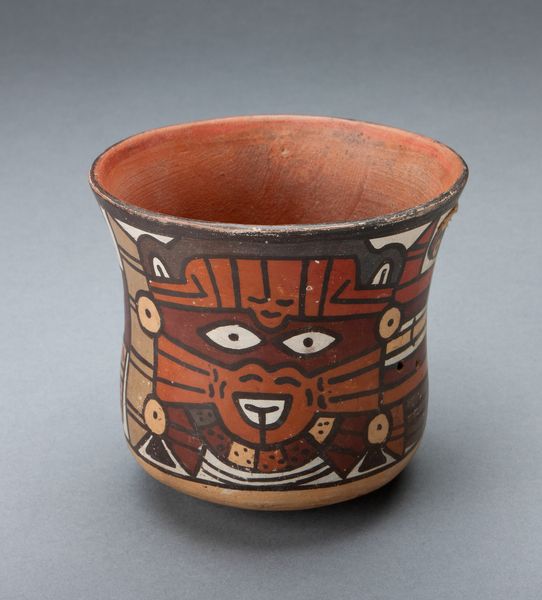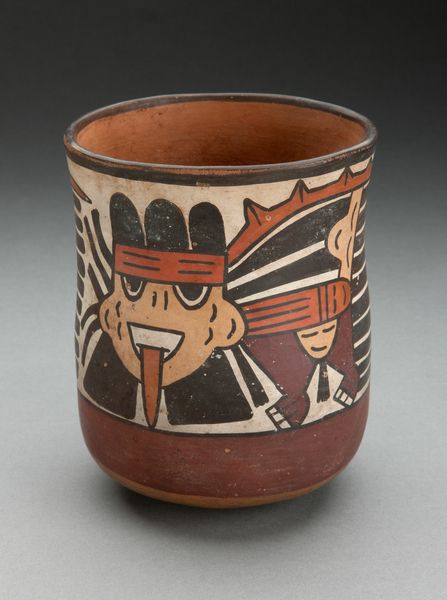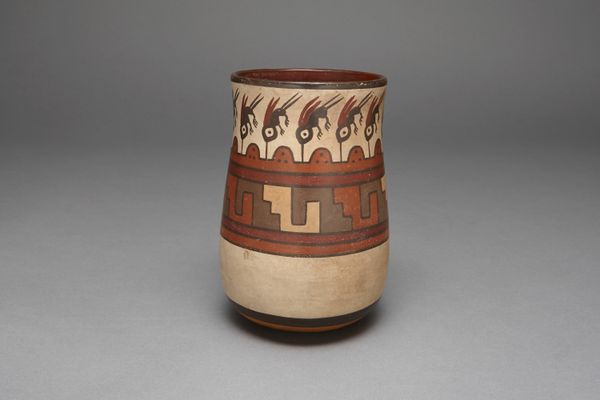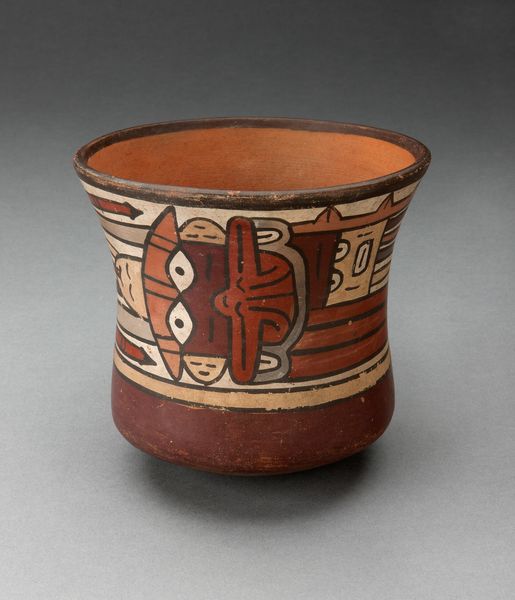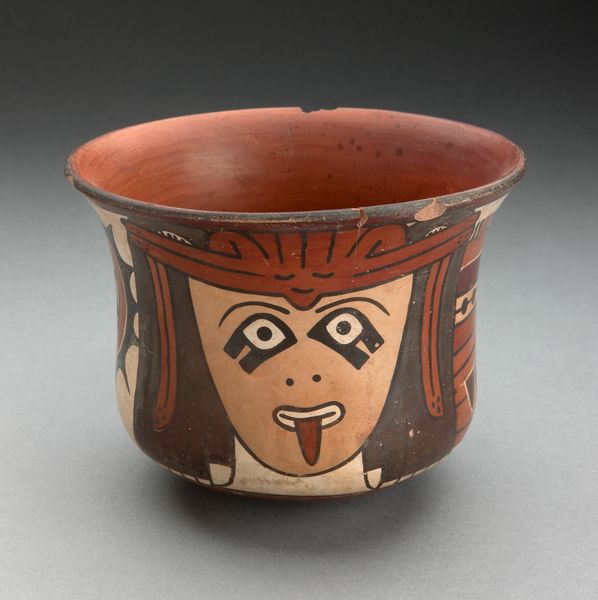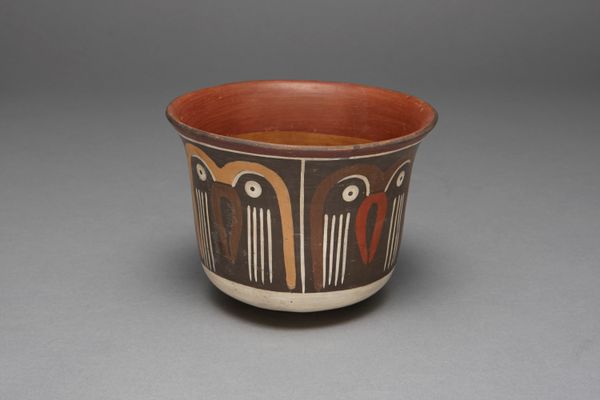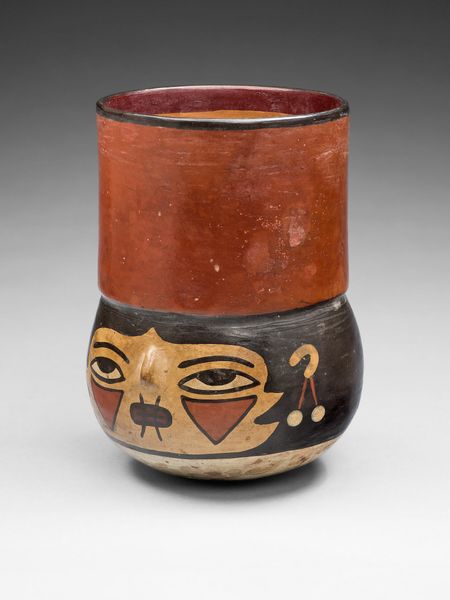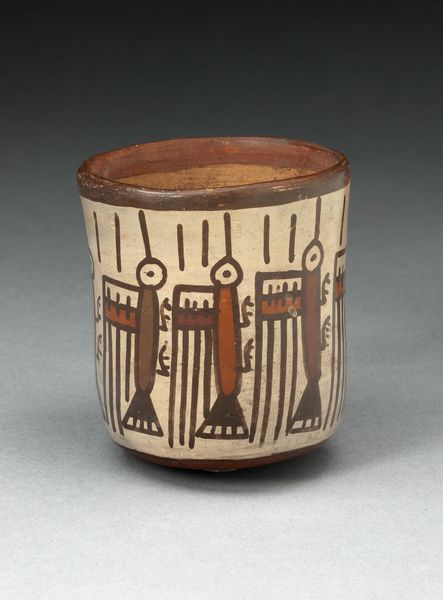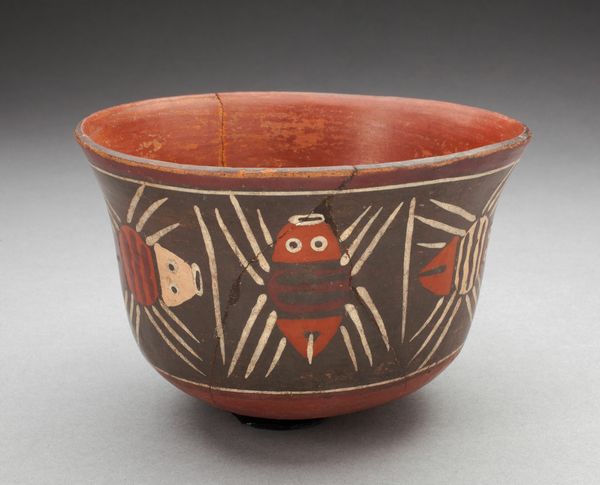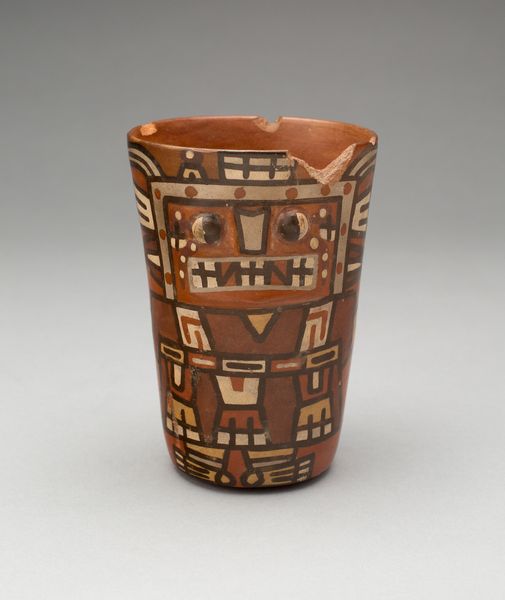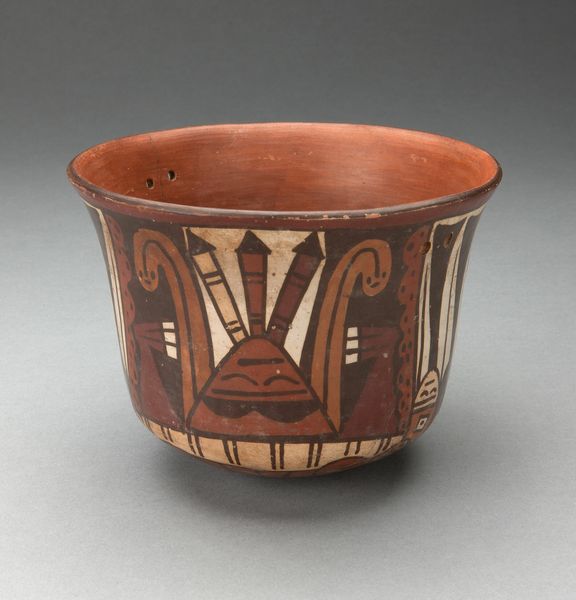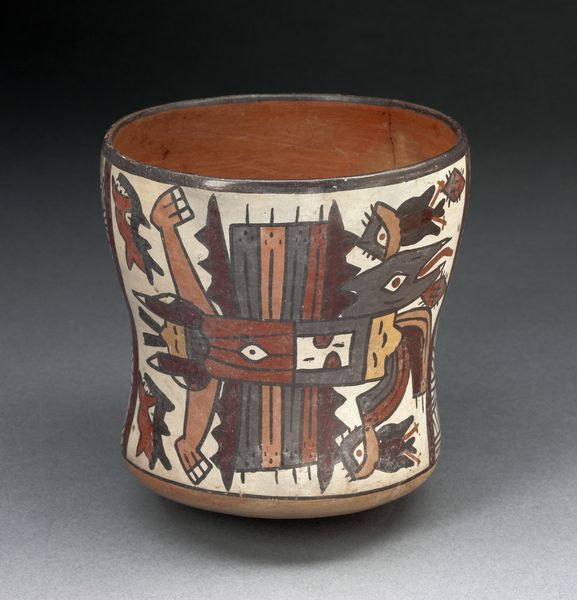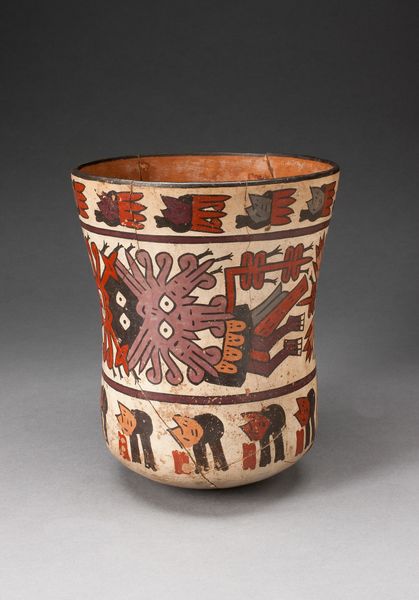
ceramic
#
ceramic
#
indigenous-americas
Dimensions: 11.8 × 13 cm (4 5/8 × 5 1/8 in.)
Copyright: Public Domain
Editor: We’re looking at a ceramic jar, circa 180 to 500 CE, made by the Nazca people. It’s adorned with repeated depictions of trophy heads. They have an unsettling presence… How do you interpret this work? Curator: What immediately strikes me is the graphic depiction of the heads, so stylized, and yet, so linked to violence and power dynamics within Nazca society. Can you think of other cultures where the display of heads, or even entire bodies, was tied to warfare, dominance, or ritual? Editor: Yes! There are well documented examples, especially in some pre-colonial cultures in Oceania and Mesoamerica… It makes me wonder, were these heads viewed as objects or as embodiments of power? Curator: Exactly! We can ask, what narratives were being constructed through these images, and whose voices are being silenced? The Nazca were actively constructing meaning, establishing a social hierarchy, and performing rituals that solidified their worldview. It is no passive aesthetic object. What do the individual features of these heads suggest to you? Editor: Some look different from others... almost like portraits, but rendered in a stylized way. I imagine each had specific connotations… Could each of the heads on this pot represent individuals, with distinct social statuses, roles in warfare, or relationships to power? Curator: Precisely. It encourages us to consider how societies deal with trauma and the objectification of the body, but also how they assert dominance through artistic representation. We must actively question whose perspectives are being prioritized in this portrayal of the defeated. What does it mean to reduce a human being to an image of powerlessness? Editor: I hadn’t thought about it in terms of who’s being silenced. The images felt unsettling, and now I see that tension represents complex, unequal power dynamics at play. Curator: That’s a crucial lens. This object is not just beautiful or interesting; it demands that we confront uncomfortable questions about human behavior, memory, and power.
Comments
No comments
Be the first to comment and join the conversation on the ultimate creative platform.
